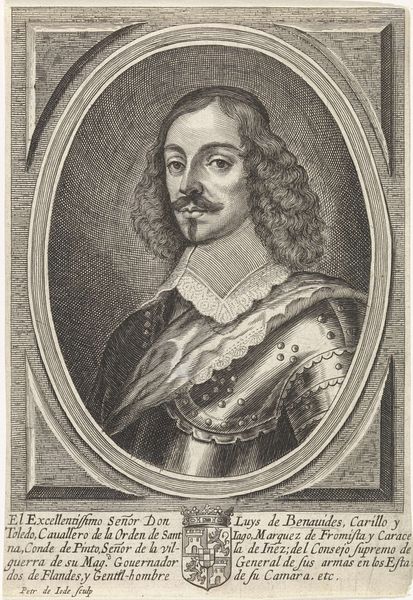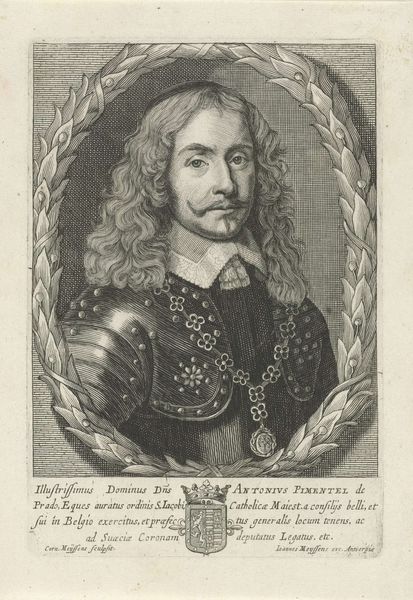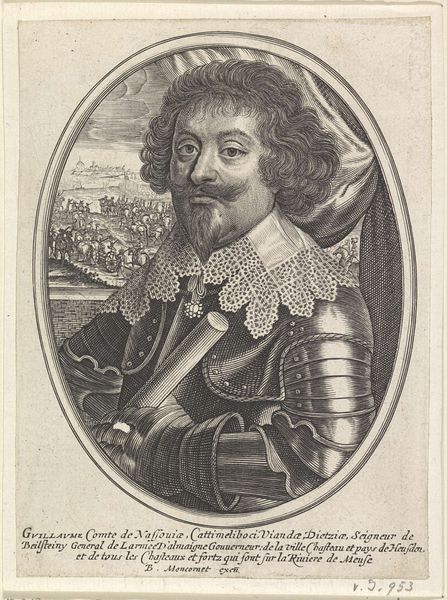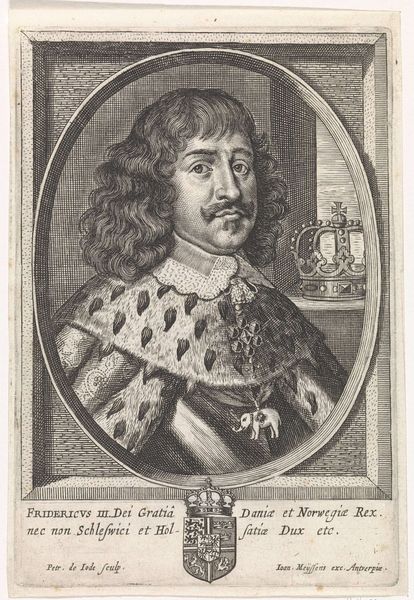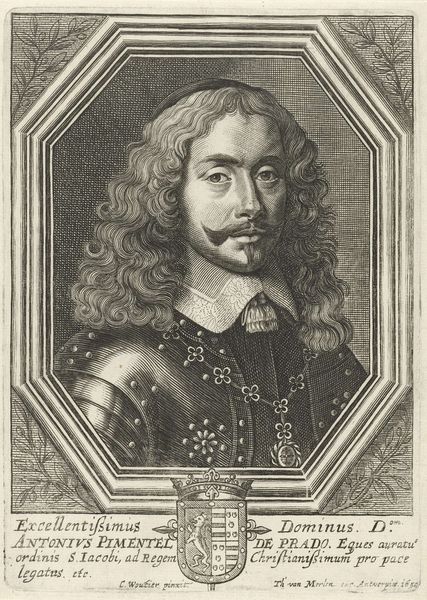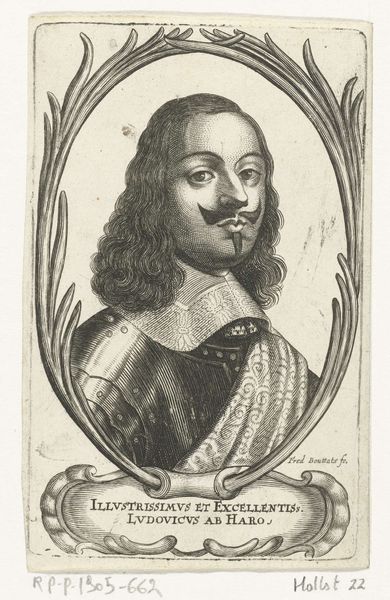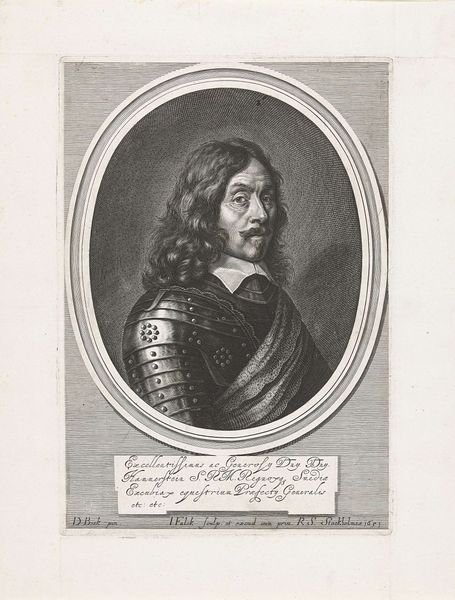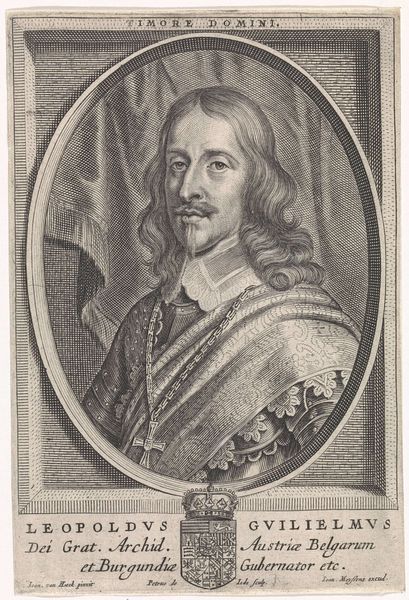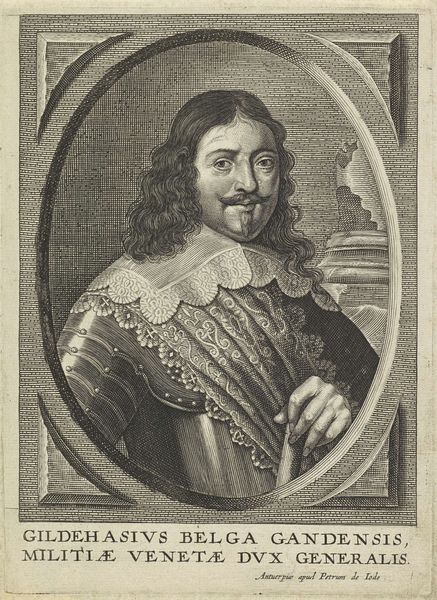
engraving
#
baroque
#
portrait drawing
#
history-painting
#
engraving
Dimensions: height 166 mm, width 114 mm
Copyright: Rijks Museum: Open Domain
Editor: We're looking at "Portret van Luis de Benavides Carillo," an engraving from between 1635 and 1653 by Peeter Huybrechts. The intricate line work is impressive, especially the detailing of the armor. It almost feels photographic with the fine level of hatching. How would you interpret this work focusing on its inherent pictorial elements? Curator: Note the sophisticated use of the oval frame—a classic baroque device, drawing the eye immediately to the figure. The interplay between the rigid frame and the flowing lines of the subject's hair and drapery establishes a dynamic tension. Editor: Yes, and the reflective quality in the rendering of the armor is striking. Curator: Exactly. The engraver exploits the medium to simulate a variety of textures. The contrasting light and dark areas across the composition underscore the dramatic chiaroscuro. Observe how Huybrechts has deployed this very sophisticated play of light. What effects do you perceive from it? Editor: It adds volume, defining shapes and highlighting key features. The light falling on his face, for example, makes him appear authoritative. But how do you weigh up the addition of the coat-of-arms and inscriptions? Curator: Those textual and symbolic elements serve to anchor the image to a specific historical identity, adding another layer to the visual framework, albeit an external one. While these elements enrich the understanding of the portrayed personage, I maintain that focusing on the purely visual informs us how he intended to be represented and perceived. This is carefully achieved through composition, line and texture alone. Editor: That's fascinating. I had initially underestimated the sophistication embedded in the line work, seeing it more as a straightforward historical record. Curator: Indeed. Close visual analysis reveals the artwork’s intrinsic aesthetic values beyond its representational function.
Comments
No comments
Be the first to comment and join the conversation on the ultimate creative platform.
